- Clone
- P85D11B4 (See other available formats)
- Regulatory Status
- RUO
- Other Names
- Eukaryotic translation initiation factor 4E, eIF-4E, eIF-4F 25 kD subunit, mRNA cap-binding protein
- Isotype
- Mouse IgG2a, κ
- Ave. Rating
- Submit a Review
- Product Citations
- publications
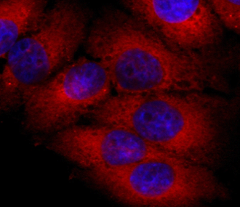
-

HeLa cells were fixed with 4% paraformaldehyde (PFA) for fifteen minutes, permeabilized with 0.5% Triton X-100 for three minutes, and blocked with 5% FBS for 60 minutes. Then the cells were intracellularly stained with 0.5 µg/mL of Alexa Fluor® 594 anti-eIF4E antibody (clone P85D11B4) overnight at 4°C. Nuclei were counterstained with DAPI (blue). The image was captured with a 60X objective.
| Cat # | Size | Price | Quantity Check Availability | Save | ||
|---|---|---|---|---|---|---|
| 693003 | 25 µg | 109€ | ||||
The initiation step of protein translation requires a number of eukaryotic translation initiation factors (eIFs). Initially, the 40S ribosomal subunit associates with Met-tRNAi and a group of initiation factors, including eIF1, eIF1A, eIF2, eIF3, and eIF5 to form the 43S pre-initiation complex. This complex is then recruited to the 5'-end of capped mRNA by another complex of factors (known as eIF4F) consisting of eIF4E, eIF4G, and eIF4A. eIF4E is an indispensable element for cap-dependent translation initiation and plays a major role in recognition of the mRNA cap structure. It binds to eIF4G, which serves as a scaffolding protein to gather eIF4A (ATP-dependent RNA helicase), eIF4B, eIF3, and poly-A-binding protein to form the 48S complex. This complex then scans the mRNA for an initiation codon and, once this is located, the 60S ribosomal subunit joins to form the elongation-competent fully functional 80S. eIF4E is the least abundant of the cellular translation initiation components and it represents the rate-limiting element for the initiation process. Under resting conditions, eIF4E is kept in an inactive form bound to 4E-binding proteins (4E-BPs); once the latter have been phosphorylated through the PI3K-AKT-mTOR signaling pathway, eIF4E is released and binds eIF4G to launch translation.
eIF4E is upregulated in various human tumors, and it contributes to transformation, tumorigenesis, and cancer progression. eIF4E overexpression facilitates translation of weak and highly structured mRNAs that typically encode proteins involved in cancer biology, such as proto-oncoproteins (e.g. cyclin D1, ornithine decarboxylase), angiogenesis factors (e.g. FGF-2, VEGF), and factors related to tumor invasiveness, such as MMP-9. Therefore, eIF4E serves as an attractive cancer drug target.
Product DetailsProduct Details
- Verified Reactivity
- Human
- Antibody Type
- Monoclonal
- Host Species
- Mouse
- Immunogen
- Purified recombinant full length of human eIF4E (AA: 1-217) expressed in E. coli.
- Formulation
- Phosphate-buffered solution, pH 7.2, containing 0.09% sodium azide.
- Preparation
- The antibody was purified by affinity chromatography and conjugated with Alexa Fluor® 594 under optimal conditions.
- Concentration
- 0.5 mg/mL
- Storage & Handling
- The antibody solution should be stored undiluted between 2°C and 8°C, and protected from prolonged exposure to light. Do not freeze.
- Application
-
ICC - Quality tested
- Recommended Usage
-
Each lot of this antibody is quality control tested by immunocytochemistry. For immunocytochemistry, a concentration range of 0.2 - 1.0 μg/ml is recommended. It is recommended that the reagent be titrated for optimal performance for each application.
* Alexa Fluor® 594 has an excitation maximum of 590 nm, and a maximum emission of 617 nm.
Alexa Fluor® and Pacific Blue™ are trademarks of Life Technologies Corporation.
View full statement regarding label licenses - Application Notes
-
Clone P85D11B4 does not cross-react with mouse (in-house tested).
- RRID
-
AB_2650791 (BioLegend Cat. No. 693003)
Antigen Details
- Structure
- 217 amino acids long, and the predicted molecular weight is 25 kD.
- Distribution
-
Cytoplasm
- Function
- Recognizes and binds the 7-methylguanosine-containing mRNA cap during an early step in the initiation of protein synthesis and facilitates ribosome binding by inducing the unwinding of the mRNAs secondary structures.
- Interaction
- eIF4E is a multi-subunit complex. It is composed of EIF4A, EIF4E and EIF4G1/EIF4G3. EIF4E is also known to interact with other partners, eg.EIF4ENIF1, EIF4A1, EIF4A2, NGDN, PIWIL2, CYFIP, FMR1, CLOCK, Lassa virus Z protein, MKNK2, LIMD1, WTIP, AJUBA, APOB
- Antigen References
-
1. Kapp LD, Lorsch JR. 2004. Annu. Rev. Biochem. 73: 657.
2. von der Haar T, et al. 2004. Nat. Struct. Mol. Biol. 11: 503.
3. Gingras AC, et al. 1999. Annu. Rev. Biochem. 68: 913.
4. De Benedetti A, Graff JR. 2004. Oncogene 23: 3189.
5. Zimmer SG, et al. 2000. Anticancer Res. 20:1343.
6. Jia Y, et al. 2012. Med. Res. Rev. 32: 786.
7. Graff JR, et al. 2007. J. Clin. Invest. 117: 2638. - Gene ID
- 1977 View all products for this Gene ID
- UniProt
- View information about eIF4E on UniProt.org
Related FAQs
Other Formats
View All eIF4E Reagents Request Custom Conjugation| Description | Clone | Applications |
|---|---|---|
| Alexa Fluor® 594 anti-eIF4E | P85D11B4 | ICC |
| Purified anti-eIF4E | P85D11B4 | WB,ICC |
Customers Also Purchased
Compare Data Across All Formats
This data display is provided for general comparisons between formats.
Your actual data may vary due to variations in samples, target cells, instruments and their settings, staining conditions, and other factors.
If you need assistance with selecting the best format contact our expert technical support team.
-
Alexa Fluor® 594 anti-eIF4E

HeLa cells were fixed with 4% paraformaldehyde (PFA) for fif... -
Purified anti-eIF4E
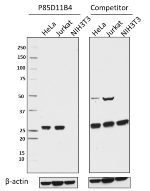
Total cell lysate from NIH3T3 cells (lane 1, 15 µg) and Jurk... 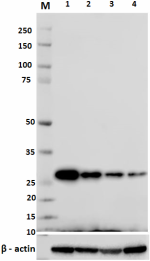
Total cell lysates (15 µg protein) from K562 (lane 1), Molt4... 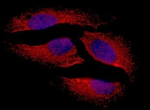
HeLa cells were fixed with 4% paraformaldehyde (PFA) for 15 ...
 Login / Register
Login / Register 










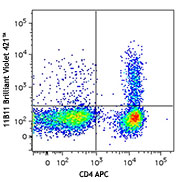
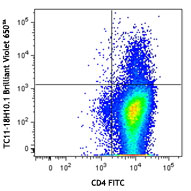

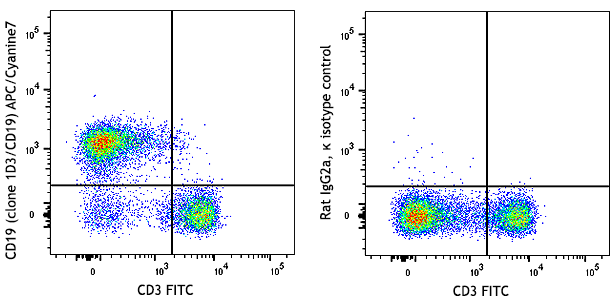



Follow Us